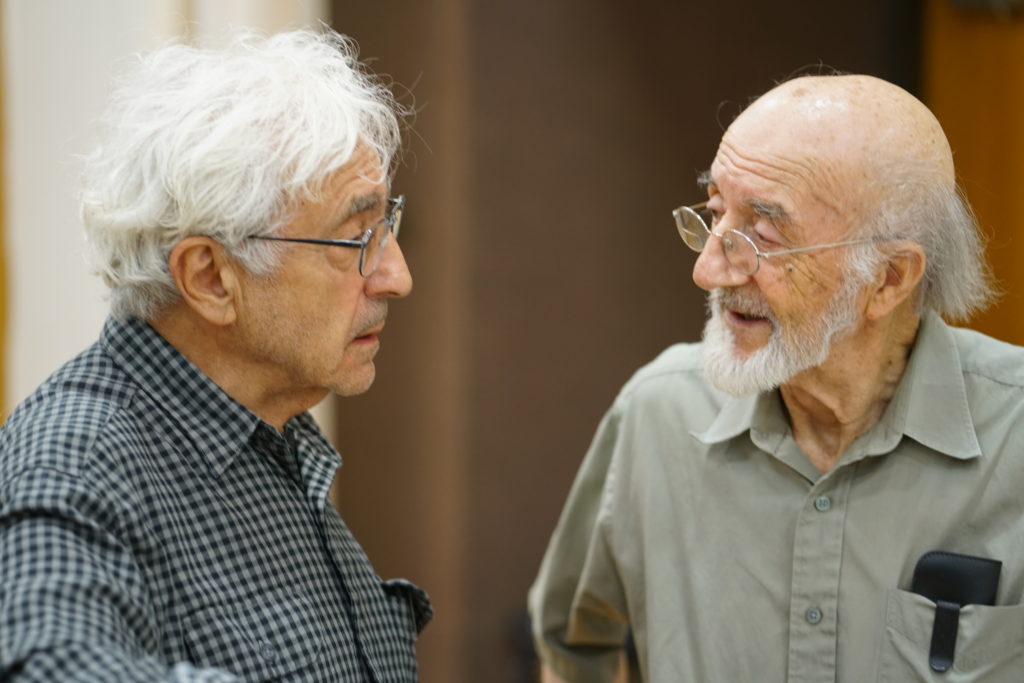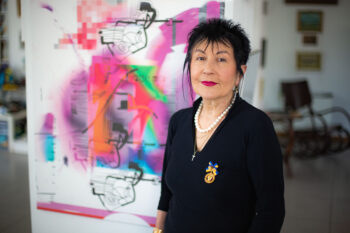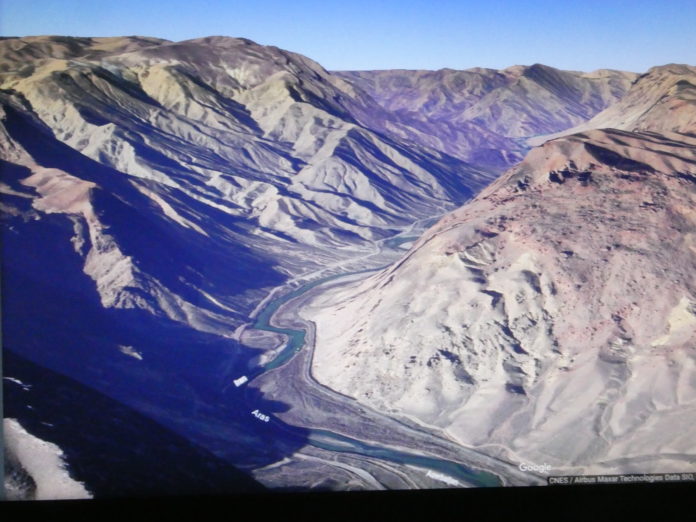By Philip P. Ketchian
Special to the Mirror-Spectator
This was not what he had struggled to come so far for. The water was ice cold. His legs were numb and not responding. He thought he had a remedy for that, so he slashed his legs with his sharp knife. That was no help and he was drowning. Instead, refusing to panic, he took a deep breath, dived down and crawled on the river bottom. After repeating that a few more times he resurfaced the last time to witness a scene straight out of a Hollywood horror film. A dragon-like object belching steam and smoke was trundling into view from the east. It was lit up with multiple searchlights in all directions turning night into day. The roar of its engine echoed back and forth against the canyon walls. He heard Surik call out to him to dive so as not to be spotted. It was the Erevan train out of Baku rumbling down the tracks. Border guards positioned on the train, with submachine guns at the ready, were scouring the area searching for anyone foolish enough to try to illegally cross the Soviet border in either direction. It was a passenger train and they would be confined under the watchful eyes of the soldiers to their seats the entire stretch of the trip, so that they could not attempt to leap off the train as they traveled so close to the international border. Those searchlights would also be illuminating the plowed strip of land between the railroad tracks and the river revealing the footprints the three friends had made crossing it. An alarm would be raised and border guards armed to their teeth and with trained dogs would be headed there very soon. He came up for air once more to see the end of the train disappearing around the bend in the distance. They had made it out safely! It was three o’clock in the morning on October 26, 1957; exhausted and shivering, they fell down prone on the ground on the Iranian side of the Arax River.

Just minutes before, the trio of friends had been standing atop a 3,500-foot-high craggy peak, and with the faint glow of the waxing crescent moon spotted the shimmering ribbon of the Arax River some 1,200 vertical feet below. Freedom was on its far shore. Little did they know, at the time, that the famous Julfa Armenian Cemetery was located a short distance to the east of them. Also visible were the railroad tracks and the plowed strip of land with the barbed wire fence behind it. This was the closest the Erevan-Baku rail line came to the river. First, however, they would need to climb down the steep and treacherous slope, the surface of which was made up of crumbling rock. It was tougher than they could have imagined. They had no ropes or any other special equipment. So they lay on their backs and inched down careful not to dislodge any of the stones that could create a rock avalanche on its way down and send a warning to the border troops. Halfway down the slope they spotted a lone soldier walking along the track. Had any rock fallen down at the time they would have been immediately discovered. They gave him enough time to go out of earshot range. Next to a large rock they undressed and left all unnecessary items there and continued their descent. When they finally had reached level ground at the foot of the hill just shy of the rail tracks they could breathe a sigh of relief. They cautiously looked about and along both sides of the rail line. The coast was clear. Surik put on his gloves and the trio ran helter-skelter across the rail tracks, over the plowed strip of land toward the barbed wire fence. With his gloved hands Surik grabbed the lowest electrified barbed wire and the second wire above from the ground with the other and separated them just enough for them to squeeze through. Only one final obstacle remained in front of them, and that was the Arax River flowing some 15 feet below at an elevation of some 2,350 feet above sea level, and about 250 to 300 feet wide at this spot. Not leaving any time for hesitation or second thoughts, like zombies they had plunged into the water.
Hagop (Akop) Yeremian was born in Peristeri, a suburb of Athens, Greece, in 1938. His father, Barsekh, a Genocide survivor from Ushak, had a construction business, and his mother, Eli, was an ethnic Greek. He also had an older brother and a sister. The neighborhood was inhabited mostly by Armenians, and Hagop attended the school established by the Armenian Church. His father was successful in his business and his expertise was much in demand during the post-WWII reconstruction boom in Greece. But the wave of repatriation also hit the Armenian diaspora with the force of a tsunami and the Yeremian family got caught in it just like the many hundreds of their neighbors.
Hakop’s mother was reluctant to make the move. However, to keep the family together she went along. Mr. Yeremian signed up to go to Armenia, to rebuild and apply his expertise to the development of Armenia. This was despite the many pleas from the Greek Government for him to remain and lend his expertise to rebuilding the local infrastructure. Thus, he packed his belongings in crates and headed for the harbor to board the Soviet ship “Chukotka” in November 1947. Unbeknown to him at the time, he had done something that would end up being a lifesaver for his family. The house that he had built for his family in Peristeri ended up far too large for his current needs. He, therefore, had opened a grocery store in the unused portion. Now, not knowing what to do with all that foodstuff, flour, beans, olives, olive oil, canned foods etcetera, he loaded the entire inventory into crates and shipped it off with the rest of his belongings. Only once he was in Armenia did he realize what a treasure trove he had.









